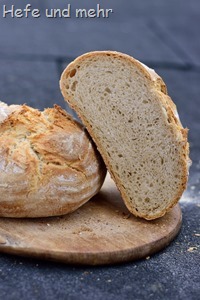 The second bread for my regional bread collection is one I know well: a crusty bread from the rhineland, called “Rheinisches Krustenbrot”.
The second bread for my regional bread collection is one I know well: a crusty bread from the rhineland, called “Rheinisches Krustenbrot”.
These crusty breads you can find in different parts of Germany and they vary in the amount of rye which is added to the dough. I know it as a mild bread with only 10% rye flour added. It is baked with seamside up which creates the typical rustic look of this bread. It has a light, fluffy crumb and – as the name suggested – a thick, crunchy crust.
I baked my version of this bread using two different sourdoughs: A rye sourdough which adds a hearty note to the flavour and which contains all of the rye in the formula, and a mild wheat sourdough which adds a joghurt like note to the taste of the bread.

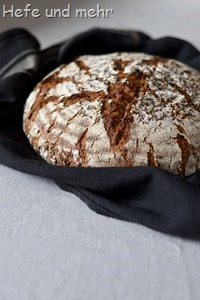 I was asked more than once to publish a sourdough rye bread recipe for the “Bread baking for Beginners” post series. I hesitated as a rye bread is not so easy to handle as a wheat one and to know when a pure sourdough loaf is ready to bake needs some experience. But with the
I was asked more than once to publish a sourdough rye bread recipe for the “Bread baking for Beginners” post series. I hesitated as a rye bread is not so easy to handle as a wheat one and to know when a pure sourdough loaf is ready to bake needs some experience. But with the 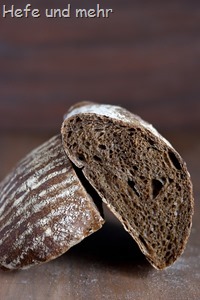 Since several weeks I have two packages of Emmer and Einkorn sitting in my pantry, waiting for me to create a recipe with them. But I was always to short in time as I had to do a lot of recipe testing for the upcoming
Since several weeks I have two packages of Emmer and Einkorn sitting in my pantry, waiting for me to create a recipe with them. But I was always to short in time as I had to do a lot of recipe testing for the upcoming 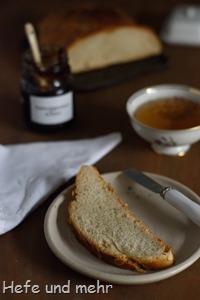 I get the question for a sweet yeast dough without egg, milk or wheat regularly. Depending on the dietary restrictions I sent the readers to
I get the question for a sweet yeast dough without egg, milk or wheat regularly. Depending on the dietary restrictions I sent the readers to 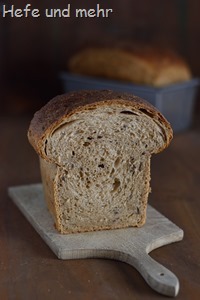 This Sandwich bread is a readers wish. But I needed two rounds, until I was really satisfied. In the first Variant I had a boiled soaker with whole spelt flour and seeds, but this added to much liquid to the dough. This resulted in a very instable crumb. The recipe needed adjustments!
This Sandwich bread is a readers wish. But I needed two rounds, until I was really satisfied. In the first Variant I had a boiled soaker with whole spelt flour and seeds, but this added to much liquid to the dough. This resulted in a very instable crumb. The recipe needed adjustments!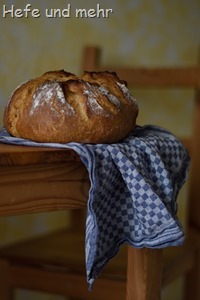
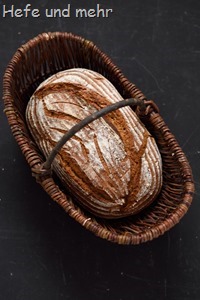 I like recipe tweaking – especially when this happens so spontaneously like
I like recipe tweaking – especially when this happens so spontaneously like 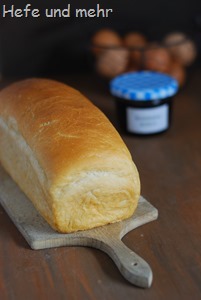
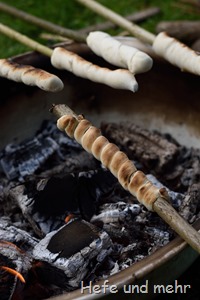 The weather on Pentecost was far away from being warm and sunny, but it was not rainy, either. And so my mum and I take my niece and nephew into the woods to collect hazelnut sticks for making bread on a stick. Before we left my – near to five years old niece – had already kneaded the dough (with some help from my mum). This girl really takes after this side of the family and can knead dough already like a pro.
The weather on Pentecost was far away from being warm and sunny, but it was not rainy, either. And so my mum and I take my niece and nephew into the woods to collect hazelnut sticks for making bread on a stick. Before we left my – near to five years old niece – had already kneaded the dough (with some help from my mum). This girl really takes after this side of the family and can knead dough already like a pro.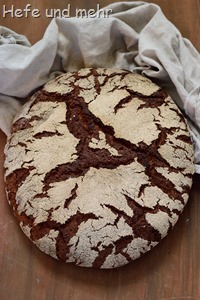 I like to bake “by order” as I can then bake bread I bake rather seldom. Pure Rye bread, for example, as I have a rather sensitive stomach who do not like the higher acidity of rye bread. And while I do not eat rye bread I still like to bake it. Its different consistency makes it a bit challenging and is a nice change in my wheat- and spelt-dough routine.
I like to bake “by order” as I can then bake bread I bake rather seldom. Pure Rye bread, for example, as I have a rather sensitive stomach who do not like the higher acidity of rye bread. And while I do not eat rye bread I still like to bake it. Its different consistency makes it a bit challenging and is a nice change in my wheat- and spelt-dough routine.